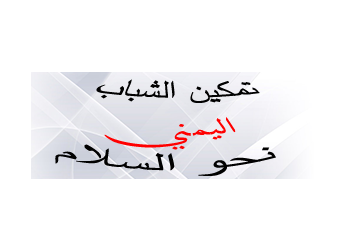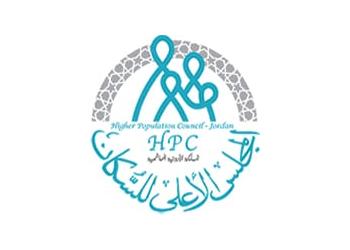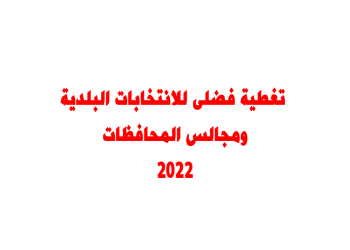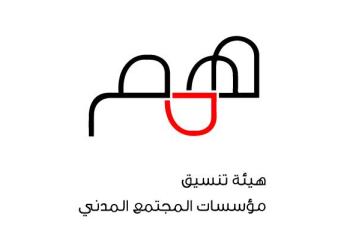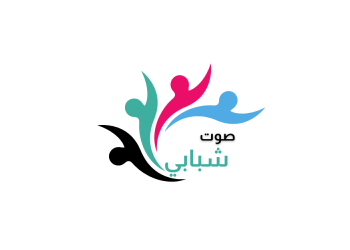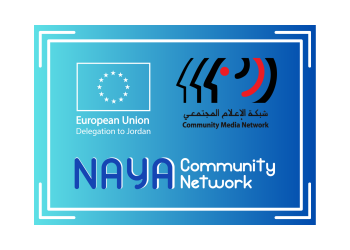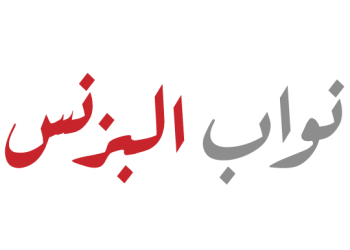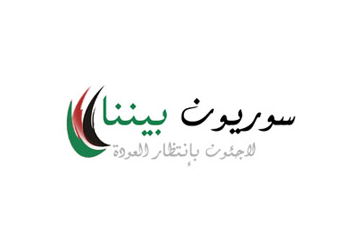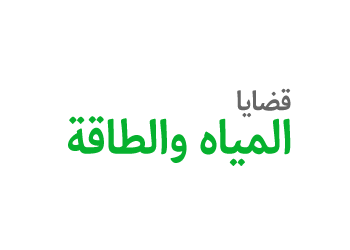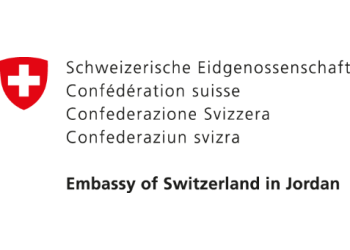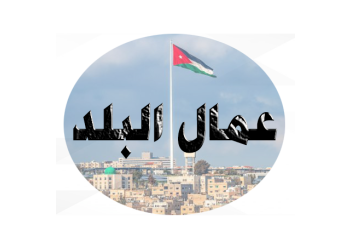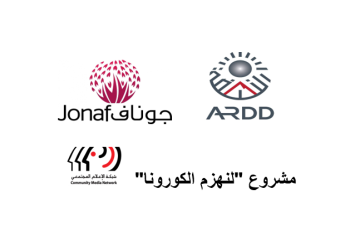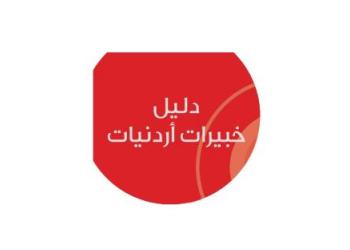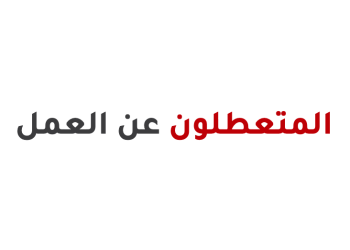Red Flags Raised in Al-Nadim Hospital in Jordan
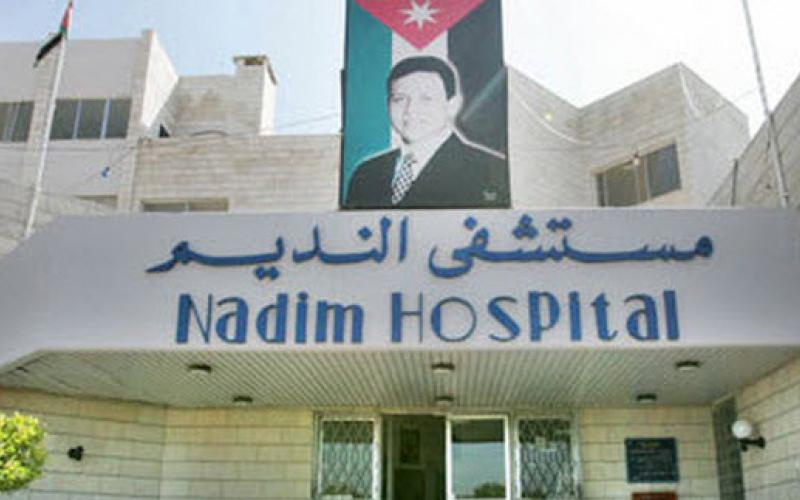
Shurooq Al-Nsoor and Ola Al-Omlah
After a traffic accident Sarah Abdullah lived through a difficult time accessing the necessary medical care at Al Nadim hospital in the governorate of Madaba south of the capital Amman, the largest in the area.
Her mother, who went with her to the hospital explained that upon Sarah’s arrival to the hospital no specialised physician was available to deal with her case, which exacerbated her daughter’s suffering.
The mother says that hospital emergency staff have failed to page the doctor, prompting a family member to call the doctor directly. After assessing Sarah’s condition, the doctor told the family, “I advise you to get her out of this hospital” for lack of a specialist who could deal with her injuries recommending that she get transferred to the capital to receive the necessary emergency care.
This data-driven investigation reveals an alarming decline in healthcare services at Al-Nadim Hospital in Madaba Governorate that was established in the eighties, before becoming a state owned hospital in 1995.
The hospital occupies an area of around 13 dunums, with a capacity of 121 beds, and the building has four floors including the basement and the ground floor. Before adding the 3,100 square-metre expansion, the old building occupied an area of 6,913 square metres.
Red Flags
2021 was a rough year for all healthcare institutions worldwide due to the pandemic, and Al-Nadim was no different since the facility also receives traffic accident cases, especially those from the nearby desert road.
Compared to another government hospital in the governorate, Al-Nadim is the largest government hospital in Madaba.
This year was not completely bad for Al-Nadim Hospital, which is located in the heart of the governorate; as no deaths due to Covid-19 were registered in the hospital in 2021, according to statistics of the Ministry of Health.
Despite that, the hospital raised a different sort of concern when the death rates among its patients continued to rise.
The number of deaths resulting from traffic accidents recorded in Madaba governorate decreased by about 60% between 2010 and 2021, according to statistics from the Public Security Directorate. But death rates recorded at Al Nadim have doubled in the same period amongst the hospital admissions.


An analysis of data gathered on Al Nadim hospital by the Ministry of Health between 2010 and 2021, revealed that the largest part of fatalities were registered in the hospital’s Intensive Care Unit (ICU), followed by the Internal Medicine Department. There has also been a rise in deaths in the Neonatal Department in the past years.
The Intensive Care Unit for Coronary Care Unit diseases (CCU) registered a high mortality rate ranging between 37% to 47% of the total admissions in its first two years of operation. This rate is higher than those documented by this investigation in similar departments in other government hospitals. It is worthy to note that Al-Nadim hospital does not perform heart surgeries.
The Coronary Care Unit (CCU) began operating two years ago, as it was established as part of Al Nadim expansion project.

Data show that in 2021, seven out of every twenty patients died in the department even though the occupancy rate there did not exceed 25%.
Data analysis reveals that with the exception of 2018, death rates have increased in the Intensive Care Unit (ICU) since 2015.
Death rates among neonates have also increased since 2017, while the Internal Medicine Department witnessed a decline in the death rate during the last four years.


Key missing ingredient: healthcare cadres
The past years witnessed a decline in the number of specialist physicians in Al-Nadim Hospital. In 2021, there were 32 doctors compared to 44 in 2010. On the other hand, statistics from the Ministry of Health have shown that the number of doctors in residency programs has increased by around 50% during that period.

Analysis of the data of the Jordanian Ministry of Health shows a slight increase of no more than 2% in the number of hospital admissions since 2010, as opposed to a clear increase in the number of emergency department admissions.
Sami Mustafa, a pseudonym for a specialist physician who previously worked at Al-Nadim Hospital, says that the emergency department gets busy when traffic accident injuries arrive, especially at peak hours due to the proximity of the hospital to the desert road.

According to Mustafa, doctors are summoned in cases of serious accidents.
He says, “The whole staff run in a panic to help. I am a specialist physician, but when there are dismembered people in the emergency department, I am going to work as an emergency doctor.”
Issa Ahmad, another pseudonym for someone who worked for several years at Al Nadim in one of the specialties, explains that during his years of service, the hospital had one anaesthesiologist who covered the Intensive Care Unit (ICU), surgeries department and the emergency departments.
The role of doctors at Al Nadim, was not limited to the hospital's departments, rather, their role extends to following up on patients in the outpatient clinics affiliated with Al-Nadim
Ahmad Ata, the head of the Neonatal Intensive Care Unit, at Al-Nadim Hospital explains that the department’s specialist physicians cover the position of “doctor on duty”, those in the neonatal department, in the paediatric department, in the specialty clinic, and the assistant physician, while the hospital lacked resident doctors in the department.
According to Ata’s clarification, the number of specialised physicians within the department is not steady and ranges between five and seven and Ata confirmed that these positions are understaffed.
Ata says, “Currently, the issue concerns all the doctors of the Ministry of Health, there is a shortage in staff because salaries offered for contracts abroad are extremely tempting.”
Infographic 8

Ata clarifies that the department had nine doctors at the beginning of the year, but three of them applied for unpaid leave to work abroad for better pay while another just resigned. He says, “The shortage in doctors is not caused by the Ministry of Health, but because doctors leave the country.”
The head of the department explains that specialty physicians in the Neonatal Department have huge responsibilities because they are understaffed. Ata says, “today a doctor would be on duty, in the morning he would cover the Neonatal Department. Yesterday he would have been on duty in the Paediatrics Department while today he covers the Neonatal Department.”
The status of the nursing staff in the Neonatal Intensive Care Unit is similar to that of specialty physicians there. The head nurse in the department Ibtisam Al-Amr says that there are three nurses in one shift, and they take care of children in the department, which includes fifteen incubators, with a ratio of one nurse for every five incubators.
The regulations issued by the Jordanian Nursing Council on the minimum ratio of nurses to patients assert that there should be one nurse for every two children as a minimum in the Neonatal Intensive Care unit, and the heads of departments and head nurses could not be included in that count.
The regulations also stress the need to increase this percentage of staff to take in consideration annual leaves, weekends and holidays that nurses get.

Al-Amr explains that the Neonatal Department was separated from the Paediatric Department at Al-Nadim Hospital in 2008, when the department faced a shortage in staff, when there were only two nurses covering each shift.
Al-Amr says, “The head nurse reinforces the department with more staff every year. We have not yet reached the required standard, but the current situation is better than in previous years.”
The head of the Neonatal Department Ahmad Ata points out that the nurse working in the Neonatal Department affiliated with the hospital would be especially qualified and trained, as she deals with “high-risk patients.”
Ata says, “The Neonatal Department is very sensitive, there are babies whose weight ranges from one to two kilograms; the nurse must have experience in dealing with ventilators, phototherapy devices and monitors.”
The head of the department explains that the duration of the infant’s stay in the neonatal unit depends on the birth weight and the time of delivery. Premature babies are at greater risk and need to stay longer in the Neonatal Department.
Occupancy rates in the Neonatal Department within the hospital have varied in the past decade and have ranged between 30% to 90%.
The head of the Neonatal Department Ahmad Ata says that at the present time, the occupancy rate in the department is 90%.
Last April, the Jordanian Medical Council issued a decision to grant Al-Nadim Government Hospital a general approval to train doctors in the various residency and fellowship programs previously approved by the council.
A former doctor at the hospital, Issa Ahmad, considered the decision wrong as “ Al-Nadim is not a teaching hospital, because it lacks enough specialists that trainee doctors could learn from.” He added, “Initially, the resident doctor is here to learn. You cannot give him/her responsibilities, and s/he should not put anyone under his/her care on his/her own, as this poses a risk to patients.”
Infographic 10

While conducting the investigation, Nisreen Mohammad, a former long serving nurse at Al-Nadim Hospital confirmed that the hospital suffered a shortage in medical and nursing staff, as hiring them from outside Madaba without adequate transportation or housing provisions posed a challenge.
According to Nisreen Mohammad, low salaries were a factor that kept the staff away from the hospital, “Most nursing staff go abroad because salaries here are low.” She also stressed that the hospital lacks specialists in major fields, including Cardiology, and Neurology.
A study published in 2018 by “Derasat” conducted by researchers from the Centre for Women’s Studies at the University of Jordan, reveals that all nurses working in Al Nadim hospital have suffered physical and verbal abuse from patients, and that was one of the key factors that has made the work environment at Al Nadim Hospital difficult for all the nursing staff.
Successive directors and recurring problems
Local media outlets in Jordan have reported repeated incidents of patients assaulting female workers at Al-Nadim Hospital, with the most recent incident having taken place in the summer of 2021, when a pregnant doctor in the Obstetrics and Gynaecology Department was beaten up by a female patient.
Those attacks also targeted departments and equipment, and the most recent assault occurred at the end of 2020, in the Internal Medicine Department by the relatives of a patient after they were informed of his death. Members of the family deliberately destroyed medical devices and equipment, and that was not the first incident of its kind that has taken place at this medical facility.
All that was happening while the administrative problems in the hospital were exacerbated, and while the medical and nursing staffing levels were not running regularly, which prompted the former Minister of Health Ghazi Al-Zabin, to ask the director of the hospital and the director of the health services in Madaba governorate to take strict measures to curb such practices taking place in the hospital, empowering them to take necessary measures against administrative employees, nursing and medical staff to commit to do their jobs, as reported by the Jordan News Agency (Petra) in 2019.
Doctor Issa Ahmad highlights the poor distribution of cadres in the hospital when he worked at the hospital years ago. He explained that half of the employees were present during one shift while others would refrain from working the other shifts especially the night ones.
Doctor Issa Ahmed says while trying to recall memories that resembled more a sad comedy, that “nurses not turning up for work is a very normal thing, it was also very normal for surgeries to start without nurses, and those would join (the surgery in progress) when they got there from home or after they finished their errands.”
The investigation documented repeated changes in the management of Al-Nadim Hospital. Since 2010, the institution has had ten different directors.
The longest period served by a director during that period was about two and a half years, while in more than one case, the management would change twice in a year, and repeatedly, as the hospital directors would be replaced annually.
The investigation team communicated with more than one former director of Al-Nadim Hospital, but they apologized and said they were busy.
Doctor Sami Mustafa who worked at Al-Nadim Hospital for about ten years explains that making hospital needs available was impacted by the attitude of the administration and its willingness to request what the hospital needed from the Ministry of Health, as the development and modernisation require funds to secure devices and to hire staff, in his opinion.
Mustafa says, “A weak director wants to save face, so he would not ask for much: When requests are submitted to him, he puts them in the drawer and would not send them to the ministry so as to come off as a hero.” He adds, “In the end, the patients pay the price.”


Hygiene in decline
Doctor Issa Ahmad who left the hospital before the new expansion was completed says, “Operating rooms are not even fit to be used as public toilets, mice would be scurrying around, and cockroaches would be on the operating table during the surgery.”
In 2019, the Jordan News Agency made a reference to Doctor Issa Ahmad’s statement when the agency published a patient’s complaint about “the lack of hygiene in the hospital rooms and the spread of insects such as ants, rats and worms everywhere.”
In 2019, the director of Al-Nadim Hospital Khalid Al-Kharabsheh acknowledged the spread of insects in the hospital despite the continuous attempts to combat them. In a statement made to Jordanian News Agency, Al-Kharabsheh attributed this to the hospital’s old infrastructure built in 1980, and to the delay in the expansion project.
Al-Kharabsheh in his statement even pointed out that the hospital’s firefighting system had been broken for years and highlighted that all departments, especially the paediatrics and emergency departments needed maintenance.
Cockroaches were not only present in the operating room, as Lana Mahmoud, a patient at the hospital, confirms that she had to get rid of a cockroach she found immediately after entering the delivery room in 2019, for fear that the insect would get to the patients’ beds. She says, “I mean, if they get on a woman who was delivering a baby. . . If she got scared and leapt up, she could get hurt.”
Reports concerning the audit of services at Al-Nadim Hospital point to the significant decline in the level of hygiene as no action was taken against the contractor, as the person supervising the cleaners would sign on their behalf it was revealed by the 2018 State Audit Bureau Report.
A project that was late and another one that did not materialise
Work in the Intensive Care Unit (ICU) in the new expansion started in May 2019, when the department capacity was increased by about ten beds. Former director of the hospital Ibrahim Al-Ma’ayah said that previously, the hospital had to transfer cases in need of intensive care or (ICU) to other hospitals in the capital, Amman.
The order to start the hospital expansion project was issued in May 2015, according to tender No. (54/2014) for a value of about 3.5 million Jordanian Dinars ($4.93 millions).
This expansion covered an area of around 3,000 square metres and included five operating rooms, an Intensive Care Unit (ICU), a Coronary Care Unit (CCU), a sterilization department and a support services department.
The joy of the governorate residents was short lived though, as the expansion project faced delays and its completion period was extended over a few years instead of one.
The 2019 Audit Bureau Report reveals that completing the expansion project took more than three times the initial time limit, without achieving its full completion.
That delay continued until 2019, and the new departments were not handed over even months after completion until the tender was given to another contractor.
Doctor Sami Mustafa confirms to the investigation team that work in the expanded departments started before the Ministry of Health legally received (the completion of the project) from the contractor, and the new departments started operating prior to the completion of the formalities.
Whereas local media had confirmed that the Intensive Care Unit started operating in the new expansion in May 2019, later in the same year, the governor of Madaba Bilal Al-Nsoor stated on Al-Mamlaka Television channel, that the departments within the expansion had not been legally received from the contractor.
Former Minister of Health Ghazi Al-Zabin believes that the expansion of Al-Nadim Hospital is a temporary solution and does not replace the need for building a new hospital. In the year preceding the Coronavirus pandemic, he had told the Jordanian News Agency (Petra), that the hospital was not providing the levels of services as required.
In 2018, the former Minister of Public Works and Housing Sami Halasah stated that a tender for the construction of the new Madaba hospital will be put out in the same year, but to date, the project has not been implemented.
The total area dedicated to this project is about 90,000 square metres, most of which will be occupied by the main building. The hospital also has an area designated for special services. The hospital plan, which was commissioned to a local company, has placed the location for the new hospital on the Madaba- Ma’in road, and it will be erected on approximately 55 dunums of land.
The (new) hospital was designed to serve patients from the southern region, and it includes 350 beds with enough room for future capacity increase. The new hospital will includes several departments such as the Surgery Department, the Cardiac Catheterization Department, the Intensive Care Unit, the Paediatric Intensive Care Unit, and the Emergency department. This is in addition to a teaching suite that contains an amphitheatre that can accommodate about 250 people alongside lecture rooms.
The new hospital project faces financing hurdles as the cost is expected to reach around 79 million Jordanian Dinars (approximately $111.3 million).
Who is to blame?
Experts from the Economic and Social Council, a body that provides consultations to the Jordanian government on economic and social policies, believe that in addition to the migration of trained health cadres, Jordan is facing the challenge of retaining them, in addition to poorly monitoring the quality of the healthcare provided in the public and private health sector according to the “State of the Nation” report for 2021.
The National Health Strategy for 2008-2012 issued by the Higher Health Council in Jordan points that one of the factors leading to the exodus of cadres from the Ministry of Health in past years was due to low salaries and the absence of an incentive systems. The system in place depended mainly on the number of years of service and was not based on actual performance, and this according to the Higher Health Council strategy does not spur the health care cadres to make more efforts or to improve the productivity and quality of the health services provided.
The Health Care Accreditation Council (HCAC) develops, updates, revises, classifies and distributes national healthcare standards to healthcare institutions and programs while taking the requirements of the International Society for Quality in Health Care (ISQua) into account.
The accredited health institution is granted a period of two years only, to be renewed at a later time after subjecting the institution to another evaluation.
Lawyer Anas Jawhar explains that the Ministry of Health is responsible for providing healthcare to all citizens in the country, as it is also the entity responsible for providing doctors.
Jawhar left his role as an anaesthesia technician in operating rooms in government hospitals for the judiciary after studying law. He became interested in medical and health accountability issues.
Jawhar says that government hospitals have their own systems, and they are not prosecuted criminally in the event of a medical error, but it is possible to claim compensation for malfunction and damage.
He says, “In the event that a specialist physician is not available and this results in harm, a civil prosecution can be brought against the ministry of health to obtain compensation. However, the causality between the absence of the specialist physician and the damage that occurred must be proven.”
Jawhar explains that the doctor or nurse on the other hand is a public employee who is accountable before the regular judicial authorities.
The lawyer pointed out that Internal Control in government institutions is the entity responsible for the discipline of its employees. He explains that when a medical error occurs, the judicial authority has the expertise to pursue the rights (of victims), unless people resort to the executive authority as the disciplinary entity.
The two investigative reporters filed a request to the Ministry of Health asking to conduct an interview with the director of Al-Nadim Hospital to obtain clarifications on their findings. To publication date, they did not receive a response from the ministry. Meanwhile, patients like Sarah Abdullah and others we interviewed as part of this investigation continue to suffer until hospital officials do their part in improving the level of services provided to patients.


